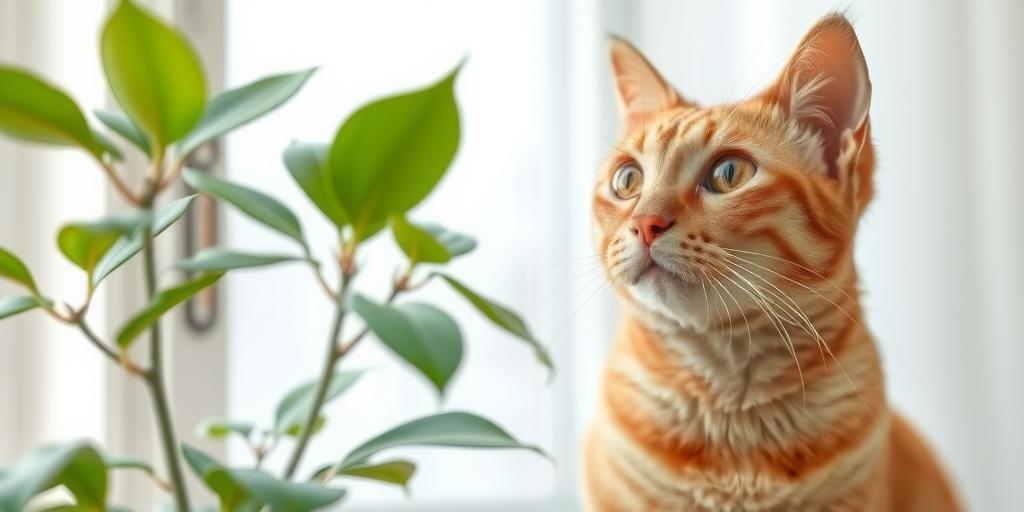
Top 8 Low Light Plants Safe for Cats: A Purrfect Guide
Discover the top 8 low light plants safe for cats that thrive indoors without harming your feline friends! Perfect for pet-loving plant parents—get the best picks and care tips now.
Introduction
Did you know that over 30% of houseplants are toxic to cats? If you’re a plant lover with a curious kitty, finding pet-safe, low light plants can be a challenge. But don’t worry—we’ve got you covered! Whether your home lacks sunlight or you simply want to keep your furry friend safe, this guide highlights the best low light plants that are non-toxic to cats. Let’s dive in and create a lush, cat-friendly oasis together!
Why Choose Low Light Plants Safe for Cats?
If you’re a cat owner who loves houseplants, finding the right balance between a lush indoor jungle and a safe environment for your feline friend can be tricky. Low light plants that are also non-toxic to cats solve two major problems at once: they thrive in dimmer indoor spaces while keeping your pets out of harm’s way.
Benefits of Low Light Plants for Indoor Spaces
Not every home is flooded with natural sunlight, but that doesn’t mean you can’t enjoy greenery indoors. Low light plants are perfect for apartments, offices, or rooms with small windows. They require minimal sunlight to grow, making them ideal for spaces where bright light is scarce. Plus, they’re often low-maintenance—great for busy plant parents!
Importance of Cat-Safe Foliage
Cats are naturally curious and love to nibble on leaves, which can be dangerous if the plant is toxic. Common houseplants like lilies, pothos, and snake plants can cause serious health issues, from vomiting to kidney failure. Choosing cat-safe plants ensures your pet can explore without risk.
How These Plants Improve Air Quality and Home Aesthetics
Beyond safety, many low light plants also purify the air by removing toxins like formaldehyde and benzene. They add life to your decor, softening hard surfaces and creating a calming atmosphere. A well-placed Boston fern or a trailing spider plant can transform a dull corner into a vibrant focal point.
Top 8 Low Light Plants Safe for Cats
1. Spider Plant (Chlorophytum comosum)
Spider plants are a classic choice for pet owners. Not only are they completely non-toxic, but they’re also incredibly resilient. They thrive in indirect light and can even tolerate occasional neglect. Bonus: they produce “pups” (baby spider plants) that you can propagate and share with friends.
These plants are also great air purifiers, making them a functional and stylish addition to any room. Just be warned—some cats love batting at the long, arching leaves, so you might need to place it somewhere out of paw’s reach if your cat is too playful.
2. Boston Fern (Nephrolepis exaltata)
If you want a lush, full-looking plant that’s safe for cats, the Boston fern is a fantastic option. It thrives in low to medium light and loves humidity, making it perfect for bathrooms or kitchens.
Hanging baskets are a great way to display Boston ferns while keeping them away from curious cats—though some felines might still try to reach them! Just be sure to mist the leaves regularly to maintain humidity.
3. Parlor Palm (Chamaedorea elegans)
The parlor palm is an elegant, pet-friendly plant that adapts well to low light conditions. Its delicate fronds add a tropical touch to any space, and it grows slowly, meaning you won’t need to repot it often.
This palm is also one of the best plants for improving indoor air quality. It’s a great choice if you want something low-maintenance that still makes a statement.
4. Peperomia (Various Species)
Peperomias come in many varieties, like the ripple peperomia or watermelon peperomia, all of which are safe for cats. These compact plants prefer bright indirect light but can tolerate lower light levels, making them versatile for different spots in your home.
Their thick, waxy leaves help retain moisture, so they don’t need frequent watering. Plus, their unique textures and colors add visual interest to shelves and tabletops.
5. Cast Iron Plant (Aspidistra elatior)
True to its name, the cast iron plant is nearly indestructible. It thrives in deep shade, making it perfect for dim corners where other plants struggle. It’s also non-toxic to cats and requires very little attention—just occasional watering.
If you’re a beginner or tend to forget about your plants, this one is a lifesaver. Its broad, dark green leaves add a bold, structured look to any room.
6. Friendship Plant (Pilea involucrata)
The friendship plant is a pet-safe option with beautifully textured, quilted leaves. It enjoys moderate to low light and thrives in humid environments, making it a great choice for terrariums or bathrooms.
This plant is also easy to propagate—just take a cutting and share it with a fellow plant lover (hence the name “friendship plant”).
7. Calathea (Prayer Plant)
Calatheas are known for their stunning, patterned leaves and unique behavior—their leaves move up and down with changes in light (a phenomenon called nyctinasty). They’re completely safe for cats and prefer indirect light with high humidity.
While they can be a bit fussy about watering (they like consistently moist soil), their striking appearance makes them worth the extra care.
8. Haworthia (Zebra Plant)
If you love succulents but worry about toxicity, haworthia is a great cat-safe option. Unlike many succulents, it tolerates low light well and requires minimal watering.
Its compact size makes it perfect for small spaces like desks or windowsills. The white-striped leaves add a modern, geometric touch to your decor.
How to Care for Low Light Cat-Safe Plants
Watering Tips
Overwatering is the most common mistake with low light plants. Since they receive less sunlight, they dry out more slowly. Always check the soil before watering—stick your finger in about an inch deep; if it’s dry, it’s time to water.
Best Soil and Potting Recommendations
Well-draining soil is key to preventing root rot. A mix of potting soil with perlite or orchid bark works well for most low light plants. Make sure your pots have drainage holes to avoid waterlogged roots.
Signs of Plant Stress and How to Fix Them
-
Yellow leaves: Often a sign of overwatering. Let the soil dry out before watering again.
-
Brown tips: Could indicate low humidity. Mist the leaves or place a humidifier nearby.
-
Leggy growth: The plant might need slightly more light. Move it closer to a window (but avoid direct sun).
Common Toxic Plants to Avoid
Some popular houseplants are dangerous for cats. Avoid:
-
Lilies (highly toxic, can cause kidney failure)
-
Pothos (causes mouth irritation and vomiting)
-
Snake Plant (can cause nausea and drooling)
-
Philodendron (contains calcium oxalate crystals, which are harmful)
Symptoms of Plant Toxicity in Cats
Watch for vomiting, diarrhea, drooling, lethargy, or difficulty breathing. If you suspect your cat has ingested a toxic plant, contact your vet immediately.
Styling Tips for Cat-Friendly Indoor Gardens
Creative Placement Ideas
-
Hanging planters: Keep trailing plants like spider plants out of reach.
-
Wall-mounted shelves: Elevate plants to protect them from curious paws.
-
Terrariums: Enclose small plants like friendship plants in glass containers.
Combining Textures and Heights
Mix tall plants (like parlor palms) with trailing varieties (like peperomia) for visual interest. Different leaf shapes and colors create a dynamic, layered look.
Protecting Plants from Curious Cats
-
Use deterrents: Citrus peels or aluminum foil around the base can discourage digging.
-
Provide alternatives: Grow cat grass to satisfy your pet’s urge to chew.
-
Secure heavy pots: Ensure large plants won’t topple if your cat jumps on them.
By choosing the right plants and styling them thoughtfully, you can create a beautiful, cat-safe indoor garden that both you and your pet will love.
Conclusion
Creating a cat-safe, low light indoor garden is easier than you think! With our top 8 picks, you can enjoy lush greenery without worrying about your feline friend’s safety. Remember to avoid toxic plants, provide proper care, and get creative with styling. Ready to transform your space? Start planting today and share your pet-friendly plant journey with us in the comments!
